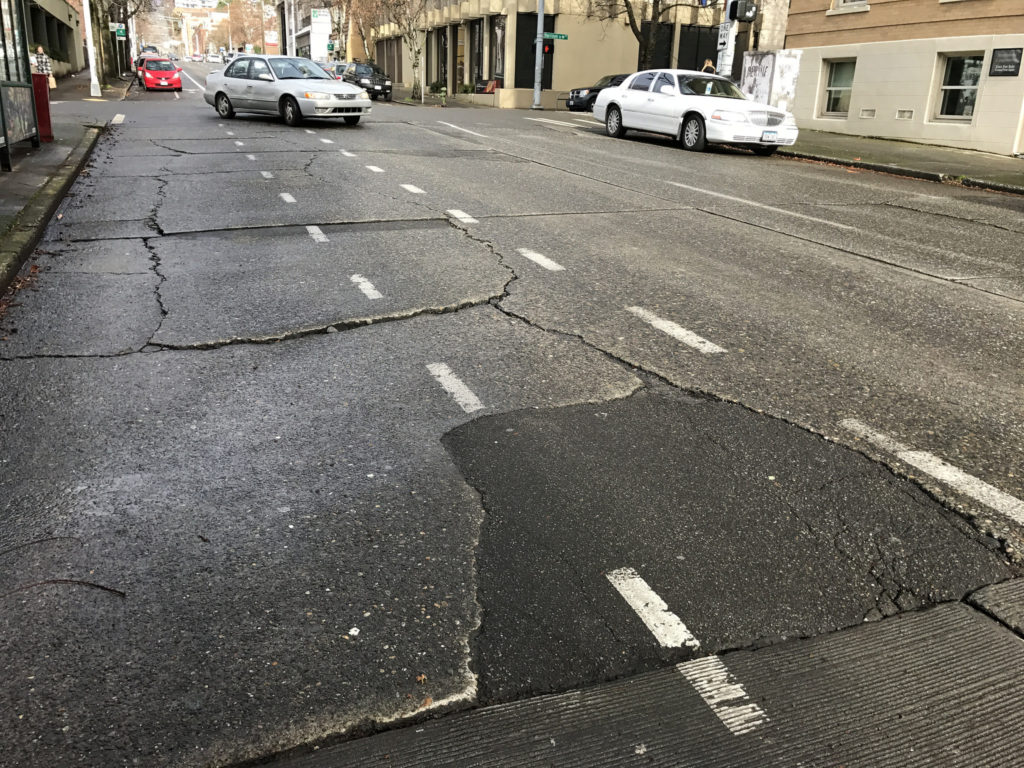As many can attest, the roads, highways, bridges, and tunnels that make up the vast transportation network in Virginia are far from being considered in perfect condition. From the the pothole-laden downtown Richmond, to the crumbling back roads of the Shenandoah Valley, to the under-maintained bridges of the Eastern Shore, many of the roads throughout the Commonwealth are as pock-marked as a teenager’s face. Due to this, discussions (complaints) about VDOT usually arise in the break room or at dinner table, followed by the usual disgust for languishing roadway maintenance.
Virginians want these infrastructure components fixed, maintained, and kept up-to-date. However, officials from the Virginia Department of Transportation (VDOT) claim that completing this task is “impossible.”
Last week, during a meeting between VDOT officials and the Commonwealth Transportation Board, the state’s six-year improvement plan for Virginia’s transportation network was discussed. This plan, overseen by VDOT, outlays the construction and maintenance of highway and roadway projects that make the network of roadways, highways, and bridges that should make the state a shining beacon of driving pleasure.
Though, in past years of under-maintenance and lack of funding, that beacon has been turned into a boondoggle as the cost to rebuild blighted bridges and tattered tarmac is now upwards of $13.1 billion. That figure, however, is only to get the transportation infrastructure up to “fair” condition.
Currently, Virginia boasts 5,500 lane-miles of interstate and 127,000 lane-miles of roadways. VDOT claims 85 percent of of interstate and primary road line-miles are considered fair or in better condition. They also say that just 60 percent of secondary road line-miles are in the same condition.
For those who have popped their Pirellis in urban areas or suffered bent or broken wheels while traveling on under-maintained highways, these projects are seen as having a high priority. Nevertheless, money is always the devil in the details.
VDOT’s entire six-year improvement program and subsequent highway construction budget carries a hefty price tag of $16.9 billion, excluding debt service that is undoubtedly needed to borrow enough money to fix the problems quickly. VDOT Chief Engineer Garrett Moore said that the monumental budget means that, “fully addressing the pavement issues would be impossible any time soon,” according to a report from WTOP.
The department’s six-year plan entails the construction of additional lane-miles of roadway, widening roads and highways, new interchanges, and further transportation network expansions. Therefore, much more funding is required to accomplish those goals in addition to fixing the current lackluster infrastructure.
Moore explained that if “money were no object” (as it always is) then VDOT and local governments would be required to spend $5.2 billion to bring the state’s deteriorating pavement up-to-date. Furthermore, $7.9 billion would be needed to fix Virginia’s structurally-deficient bridges.
While this seems too much to handle as-is, the discussion has not even begun on secondary roads – the ones traveled by local commuters everyday. Secondary roads nearly always fall by the wayside as funding is usually thrown towards interstate highways and roadways linking towns.
In the last two years, VDOT has spent over $100 million on re-surfacing, re-paving, and re-engineering secondary and side roads in Northern Virginia. Thanks to this, Northern Virginia now touts that 40 percent of their secondary roads are in at least “fair” condition, up from 30 percent – what an achievement…
“Interstate and primary pavements are improving significantly, while secondary pavements…is kind of holding flat,” Virginia Deputy Transportation Secretary Nick Donohue said.
He also acknowledged that secondary roads in Northern Virginia are in very bad shape. Nonetheless, if the secondary roads are in that terrible of shape in Northern Virginia, inarguably the wealthiest area of the entire state, how are they elsewhere?

